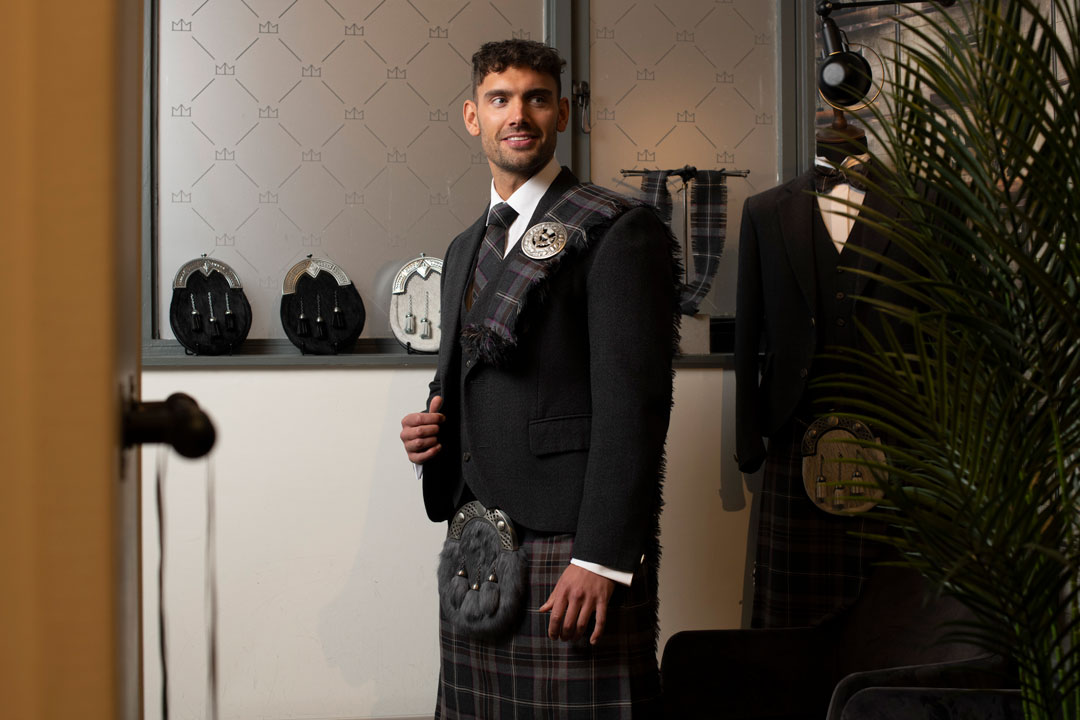When you attend any formal event in Scotland, you are guaranteed to see at least one person wearing a kilt. Kilts are a part of Scottish identity and are celebrated as such at every opportunity. The design of a traditional Scottish kilt has remained unchanged since the 18th century when the first fèileadh beag, or little kilt, was created. However, since then alternative kilt styles have been created, some of which have grown in popularity. So what’s the difference between traditional and contemporary kilt? If a kilt isn’t traditional, can it still be considered a kilt?

Utility Kilts
A growing trend in America are utility kilts. Thought to have been first created in the later part of the 20th century, utility kilts are a rugged offshoot of the traditional wool kilt. Often featuring pockets and loopholes for carrying tools, these kilts are popular among blacksmiths, carpenters and outdoorsmen. These kilts are generally considered to be a functional alternative to workwear, as they provide unrestricted movement and increased airflow over trousers. Utility kilts are usually made from materials such as denim, leather or other hard-wearing fabrics. The variety of materials used allows utility kilts to be customised based on personal preferences and functionality, which has ultimately added to their popularity. As their popularity grows as workwear, so does their popularity as fashionable clothing. It’s not uncommon to see festival-goers sporting utility kilts and a few celebrities have been photographed wearing them too.

Traditional Kilts
Traditional Scottish kilts, for the most part, are reserved for formal occasions like weddings or Burns Supper. These kilts are made from 8 yards of 13 - 16 ounce worsted wool and are accompanied by a jacket, kilt socks, sporran and other highlandwear accessories. While slightly less traditional, 7-yard variants are also available and are popular options for people who require a lighter kilt. Other than formal occasions, traditional kilts are often worn to sporting fixtures as well as other casual events. Scots love an excuse to wear their kilt, so it’s not uncommon to see people wearing them, especially at the weekend. While similar in shape to utility kilts, kilts in Scotland aren’t worn as workwear but are becoming more popular as fashionable clothing.
Can Utility Kilts Be Considered True Kilts?
As traditional Scottish kiltmakers, we are somewhat protective over kilts as a part of Scottish culture, history and heritage. The craft of kiltmaking goes back hundreds of years and isn’t something that can easily be taught. When comparing traditional Scottish kilts to utility kilts, they are obviously very different. Although the shape is similar, utility kilts are more akin to the great kilt, not in appearance, but in essence. The great kilt was born out of necessity, thanks to the harsh climate of the Scottish highlands. Highlanders wore the great kilt because it was warm and because they were worn at knee length, it stayed out of the boggy water around their feet. Utility kilts are worn because they provide unrestricted movement and allow for better airflow than trousers would. Both the great kilt and the utility kilt are a product of practicality. While utility kilts cannot be considered traditional kilts, they can indeed be considered true kilts.

Should I buy a Traditional Kilt?
If you have worn a utility kilt before and enjoyed your experience, then you should absolutely consider buying a traditional Scottish kilt. At MacGregor and MacDuff we have over 4,000 tartans to choose from and all of our kilts are made-to-measure. Buying a kilt from the Kings of Kilts has also never been easier. With our Virtual Kilt Fitting Service, you can now get the kilt shop experience from anywhere in the world. By connecting with one of our stylists over a video call, we can walk you through all of your options and help you find your dream highlandwear look. Using your measurements and choices, we then create your one-of-a-kind outfit and post it to you via our international courier.
While our kilts may not have pockets or loops for your tools, they do have centuries of craftsmanship sewed into each pleat. Click here to learn more about our Virtual Kilt Fitting Service and book yourself an appointment with one of our stylists.
